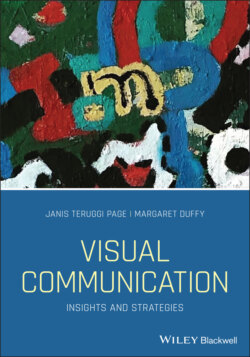Читать книгу Visual Communication - Janis Teruggi Page - Страница 13
Chapter 1 Making Sense of Visual Culture: 1000 Words or One Simple Picture?
Оглавление“Pics or it didn’t happen.”
Source: http://www.dpreview.com/forums/post/58791114. Reproduced with permission of RetroClipArt/Shutterstock.com.
By 2015, this phrase had morphed from a meme to a catchphrase that seemed to be everywhere. If a friend tweeted that she'd been cliff diving in Acapulco, you might respond with that phrase suggesting that perhaps she was being boastful without any evidence to back it up (Whitehead, 2015). If your gamer pal claimed to have reached level 60 in World of Warcraft, you might demand some proof.
Other phrases call on our desire to tap into what Whitehead and others have called “visual authority.” You've all heard that “seeing is believing” and heard people say, “I'll believe it when I see it with my own eyes.” And consider the famous Chinese proverb, “a picture is worth a thousand words.” Here's the thing: it's not Chinese, and it's not a proverb. In fact, it was likely the creation of ad man Fred Barnard1 in the 1920s. As William Safire (1996) writes, Barnard, trying to increase his agency's business selling ads on railway cars, came up with the phrase. He had it translated into Chinese characters with the caption “Chinese Proverb: One Picture is Worth Ten Thousand Words” and it passed into popular culture as “one thousand words.” Whether it is one thousand or ten, Barnard tapped into the notion that most people find visual evidence more credible and interesting than verbal or textual expression (Graber, 1990).
In entertainment, politics, interpersonal interactions, and at work and at play, we're all consuming, evaluating, and creating visuals. Our culture is increasingly suffused with images aimed at selling us something, persuading us, informing us, entertaining us, and connecting us with others. Your skills and capabilities in communicating effectively and critically evaluating what's around you are crucial to your personal and professional success and that is what this book is about. In the following chapters, we'll provide you with the tools to become an ethical and effective communicator in an era increasingly suffused with images of all kinds.
Key Learning Objectives
1 Understand visual culture and its transformation in the digital age.
2 Explore the fluidity of visual meaning.
3 Identify ways to research and analyze visuals.
Chapter Overview
In this introductory chapter, you'll explore five important issues relating to visuals in contemporary society. First, you'll be introduced to how visuals work and how we interpret them. Second, we'll review the astounding growth of visuals and video in recent years and how this trend is on a steep upward trajectory. Third, we examine the concept of visual culture and how changing technology relates to that culture. Fourth, you'll delve into how individuals can draw different meanings from the same visuals or video artifacts and how that process relates to social life and the meanings we take from our environment. Fifth, we preview ways to analyze visuals. At the close of the chapter we offer two vignettes illustrating how visuals work and provide an overview of the book as a whole.
